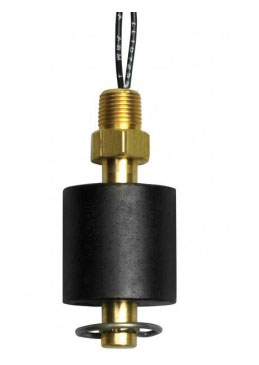M4500 Series

M4500 Series
Typically suited for use with aromatic hydrocarbons, diluted acids, and bases, this miniature float switch works well in petroleum fluids, and mounts easily to an NPT pipe fitting to be extended into fluids with a standard pipe
Applicable Industries
- Petroleum-based liquids, lubricating oils, gasoline and diesel fuels
- Storage tanks of vehicles, generators, transmissions, hydraulic systems
- Fluid recovery, refining and fuel processing
Features
• For high or low level float switch liquid control
Material
- Stem: Brass
- Float: Buna-N
Specifications
- Fitting type: 1/8” NPT pipe thread
- Max. temperature: 221°F / 105°C
- Max. pressure: 150 psi
- Switch rating: 30 watt, 240V max. (AC/DC), Single Pole, Single Throw (SPST)
- Electrical ratings Switches are rated for resistive loads. The table below represents the UL guidelines for current (amperes resistive) at different voltages.
Electrical Considerations
When using Madison level switches, it is important to consider the application’s electrical parameters. Our level switches utilize reed switch technology, which are glass encapsulated, magnetically actuated switches. Madison generally provides electrical ratings for resistive loads; however, where the maximum current of the load permits, the switches are capable of controlling devices such as motors, solenoids or coils that produce capacitive or inductive electrical loads. Where possible, Madison recommends the use of general-purpose/isolation relays or controllers to protect the switch.
Protection Techniques and Common Failure Modes
Reed Switch protection is the most successful method of increasing the performance and life of your level sensor. Since every application varies, it is important to understand your protection options. The life of the reed switch is typically 1 million cycles, within rated load conditions. The table below is a guide to suggested protection techniques and common failure modes associated with each load type.